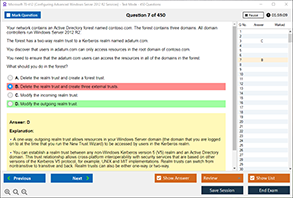Introduction
The OSI (Open Systems Interconnection) model is a conceptual framework used to understand and describe how different networking protocols and devices interact in a network. The model divides networking tasks into seven layers, each with distinct responsibilities. One of the critical layers in the OSI model is the Network Layer (Layer 3), which plays a pivotal role in routing, addressing, and forwarding data packets across different networks.
In this blog post, we will dive deep into the characteristics of the Network Layer, its role in the OSI model, and why it is vital for effective communication in computer networks. Whether you're a networking enthusiast, a student preparing for certifications like CompTIA Network+ or CCNA, or a professional seeking to deepen your understanding of networking concepts, this article will provide a clear and comprehensive overview of the Network Layer.
What is the Network Layer in the OSI Model?
The OSI model consists of seven layers:
- Physical Layer: Deals with the transmission of raw data over physical media.
- Data Link Layer: Manages node-to-node data transfer and error detection.
- Network Layer: Responsible for routing, addressing, and packet forwarding.
- Transport Layer: Ensures reliable data transfer and error correction.
- Session Layer: Manages sessions and controls the dialog between computers.
- Presentation Layer: Translates data between the application and transport layers.
- Application Layer: Provides network services to end-user applications.
The Network Layer (Layer 3) sits in the middle of the OSI model, bridging the gap between the Data Link Layer and the Transport Layer. Its primary responsibility is to manage the transmission of data packets from the source device to the destination device across one or more networks. It provides logical addressing, which is necessary for devices to locate and communicate with each other over the network.
Key Characteristics of the Network Layer
1. Logical Addressing (IP Addressing)
At the heart of the Network Layer's operation is logical addressing, which allows devices to be uniquely identified within a network. In the case of IPv4 and IPv6, the Network Layer uses IP addresses to determine the source and destination of data packets. Unlike the Data Link Layer, which uses physical MAC addresses for communication within a local network, the Network Layer’s IP addresses enable devices to communicate across diverse networks.
Example: When you send an email from your computer to someone in another country, your device will utilize the IP address assigned to it and the destination IP address to correctly route the data packet through multiple networks.
2. Routing and Packet Forwarding
Another critical characteristic of the Network Layer is routing, which determines the best path for data to travel from the source to the destination. Routers, which operate at the Network Layer, are responsible for examining the destination IP address in data packets and forwarding them to the next hop or network segment.
Routing is essential for communication across different network segments and subnets. Routers make decisions based on routing tables, which store the most efficient paths to various networks.
Example: When a packet leaves your local network, it must be forwarded by routers until it reaches the destination network. Routers evaluate the packet’s destination address, consult their routing tables, and forward it to the next network hop.
3. Fragmentation and Reassembly
In some cases, data packets need to be divided into smaller pieces to pass through network devices with size limitations. The Network Layer is responsible for fragmenting large packets and reassembling them at the destination. This process ensures that data can travel through various media, which may have different maximum transmission unit (MTU) sizes.
Example: When sending a large file across the internet, the data might be broken down into smaller packets if the network requires it. Once these fragments reach their destination, they are reassembled to form the complete file.
4. Error Handling and Diagnostics
Although error handling is primarily the responsibility of the Transport Layer, the Network Layer does offer some error detection and diagnostic tools. For example, the ICMP (Internet Control Message Protocol) operates at the Network Layer to provide error messages and diagnostic functions, such as ping and traceroute. These tools help network administrators troubleshoot network connectivity issues and identify potential problems along the communication path.
Example: When you run the ping command to check if a remote device is reachable, ICMP packets are sent from your device to the destination device. If the device is reachable, it responds; otherwise, an error message is returned.
5. Interconnecting Different Network Architectures
The Network Layer is responsible for enabling communication between different types of network technologies. Whether it’s Ethernet, Wi-Fi, or a different network type, the Network Layer ensures that data can be sent across various physical media, making the network layer essential for building scalable, multi-protocol networks.
Example: If you are connected to a local Wi-Fi network, and you need to communicate with a device on a wired Ethernet network, the Network Layer ensures that the communication is properly routed and reaches the destination, even though the underlying media types differ.
Protocols Operating at the Network Layer
Several protocols operate at the Network Layer to ensure smooth communication between devices. The most commonly known protocols include:
- Internet Protocol (IP): The fundamental protocol used for addressing and routing data packets. It operates in two versions: IPv4 and IPv6.
- Internet Control Message Protocol (ICMP): A protocol used for sending error messages and performing diagnostics.
- Address Resolution Protocol (ARP): A protocol used to map an IP address to a MAC address in a local network.
- Routing Protocols (e.g., OSPF, RIP, BGP): These protocols allow routers to share information and determine the most efficient paths for data to travel.
The Importance of the Network Layer
The Network Layer's characteristics make it essential for any network to function effectively. Without it, devices would not be able to communicate across different networks, nor would data packets know how to reach their destination. It allows for scalability, security, and flexibility in designing networks that span across multiple regions, data centers, and even countries.
Example: In an enterprise network, the Network Layer is responsible for ensuring that employees at different office locations can access central resources, even though these locations are physically separated.
Conclusion
The Network Layer in the OSI model is essential for enabling communication across different networks. It provides logical addressing, handles routing, manages packet fragmentation, and ensures devices can interconnect across various network technologies. Understanding its characteristics is crucial for anyone working in the networking field, as it is the foundation for all communication that occurs between devices on a large scale.
Whether you are troubleshooting network issues or designing complex, multi-network systems, a solid grasp of the Network Layer’s functionalities will help you build efficient, scalable, and reliable networks. With the Network Layer’s role in mind, it’s clear that this layer is a cornerstone of modern communication.
Free Sample Questions
Which of the following is a characteristic of the Network Layer in the OSI model?
A) It is responsible for error detection and correction.
B) It handles the physical transmission of data.
C) It provides logical addressing and routing.
D) It ensures reliable data transfer.
Answer: C) It provides logical addressing and routing.
Which protocol operates at the Network Layer to provide diagnostic functions such as pinging a device?
A) TCP
B) ICMP
C) ARP
D) HTTP
Answer: B) ICMP
What is the role of a router at the Network Layer?
A) It transmits data through physical cables.
B) It forwards data packets based on their IP address.
C) It provides error correction for data transmission.
D) It determines the reliability of a network connection.
Answer: B) It forwards data packets based on their IP address.



